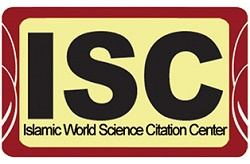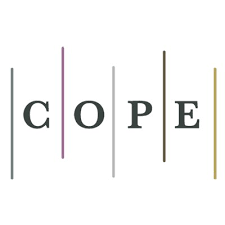Human Capital Externalities and Productivity in Cities
DOI:
https://doi.org/10.52547/ijimes.2.4.20DOR:
https://dorl.net/dor/20.1001.1.27832678.2022.2.4.2.5Keywords:
Human Capital, Externalities, Productivity, CitiesAbstract
Purpose: Human Capital Theory states that individuals invest in their human capital in order to enhance own productivity which is in turn rewarded by higher wages. The theory asserts that investments in human capital are undertaken by individuals until the point where the marginal productivity gained equals the marginal opportunity cost (from the individual’s viewpoint). Benefits of human capital accumulation by a person need not pertain to that person solely. An individual’s investment in her own human capital may also increase productivity of the other factors of production, i.e. physical capital or human capital of others. Importantly, the channels of such influence – the most prominent of which is sharing of knowledge and skills through formal and informal interaction between people in the same industry, city, region or economy – may not be internalized within firms or families. This gives rise to human capital externalities.
Methodology: The technique used is DEMATEL method. A questionnaire was constructed and answered by eleven experts. Then the DEMATEL method was applied to analyze the importance of criteria and the casual relations among the criteria were constructed. The study period is 2021-2022.
Findings: Factors affecting productivity in cities can be divided into several categories:
Factors related to human resources, Factors related to management, Factors related to the government, Equipment and facilities, Technology, Environmental factors, Materials and energy.
Originality/Value: Human capital can be defined as those skills, abilities, and knowledge embodied in an individual which contribute to a productive process by creating value, whether it be economic or social.
Downloads
References
Smith, A. (1776). An inquiry into the nature and causes of the wealth of nations: Volume One. London: printed for W. Strahan; and T. Cadell, 1776.
Marshall, A. (1890). Principles of Economics: an introductory volume, book 4, ch. 6, version numérique. McMaster University, Archive for the History of Economic Thought.
Ma, L., & Ye, R. (2019). Does daily commuting behavior matter to employee productivity?. Journal of Transport Geography, 76, 130-141.
Samadzad, S., & Hashemi, M. (2021). Human Resource Productivity and Work-Life Balance in Learning Organizations. International Journal of Innovation in Management, Economics and Social Sciences, 1(3), 32-45.
Samadzad, S., & Hashemi, M. (2021). Work - Life Balance and Productivity in Learning organization (LOs), Rah publications, Tehran.
Abel, J., Dey, I., & Gabe, T. (2010). Productivity and the density of human capital, Federal Reserve Bank of New York Staff Reports 440.
Chauvin, J. P., Glaeser, E., Ma, Y., & Tobio, K. (2017). What is different about urbanization in rich and poor countries? Cities in Brazil, China, India and the United States. Journal of Urban Economics, 98, 17-49.
Lee, H. W., Pak, J., Kim, S., & Li, L. Z. (2019). Effects of human resource management systems on employee proactivity and group innovation. Journal of Management, 45(2), 819-846.
Whelan, S., & Parkinson, S. (2017). Housing tenure, mobility and labour market behaviour.
Noori, F., & Ghahremani Nahr, J. (2019), Structural-interpretative Patterns of Factors Affecting the Sustainable Development of Agricultural Production Cooperatives (Case Study: East Azerbaijan Province). Journal of Agricultural Economics and Development, 33(3), 281-297.
Noori, F., Garachorlo, N., Samadzad, S. and Ghahremani Nahr, J. (2019), Comparative Study of Factors Affecting Human Resources Productivity in Scientific and Technological Organizations of Selected Countries and Component Evaluation in Academic Center for Education, Culture and Research, Journal of Human Resource Study, 9(1), 71-92.
Duranton, G. and Puga, D. (2004), Micro-Foundations of Urban Agglomeration Economies, Handbook of Regional and Urban Economics, 4, 2063-2117.
Jovanovic, B., & Rob, R. (1989). Growth and diffusion of technology. Review of Economic Studies, 56(4), 569-582.
Acemoglu, D. (1996). A micro foundation for social increasing returns in human capital accumulation. Quarterly Journal of Economics, 111(3), 779-804.
Potelienė, S., & Tamašauskienė, Z. (2013). Human capital investment: Measuring returns to education. Socialiniai tyrimai, (4), 56-65.
Ghahremani Nahr, J. (2020), Improvement the efficiency and efficiency of the closed loop supply chain: Whale optimization algorithm and novel priority-based encoding approach. Journal of Decisions and Operations Research, 4(4), 299-315.
Bloom, D.E., Canning, D. and Sevilla, J. (2004) The Effect of Health on Economic Growth: A Production Function Approach. World Development, 32, 1-13.
Maciulyte Sniukiene, A. and Matuzeviciute, K. (2018), Impact of Human Capital Development on Productivity Growth in Eu Member States, Business, Management and Education, 16(1), 1-12.
Zeng, S.X., Xie, X.M. and Tam, C.M. (2010), Relationship between cooperation networks and innovation performance of SMEs, Technovation, 30(3), 181-194.
Yang, Y.P., Shieh, H. M., Leu, J.D. and Tzeng, G.H. (2008), A novel hybrid MCDM model combined with DEMATEL and ANP with applications. International Journal Operational Research, 5(3), 160-168.
Published
How to Cite
Issue
Section
License
Copyright (c) 2022 Saeideh Samadzad, Mirabbas Hashemi

This work is licensed under a Creative Commons Attribution 4.0 International License.












